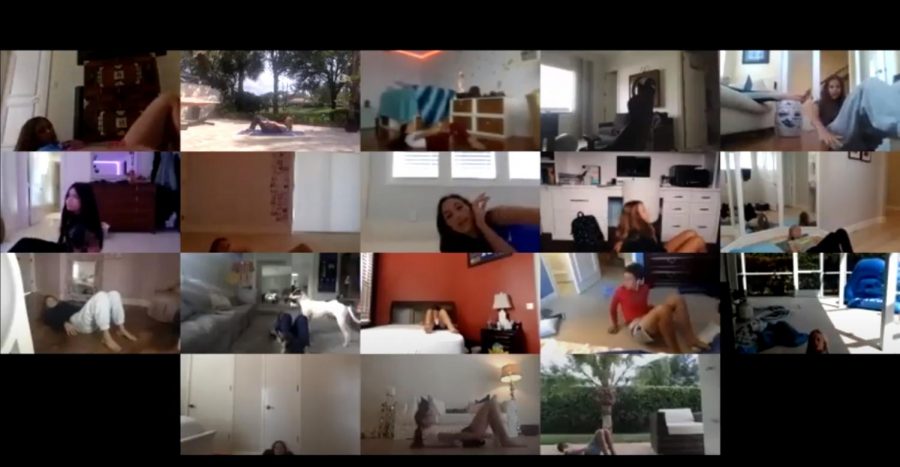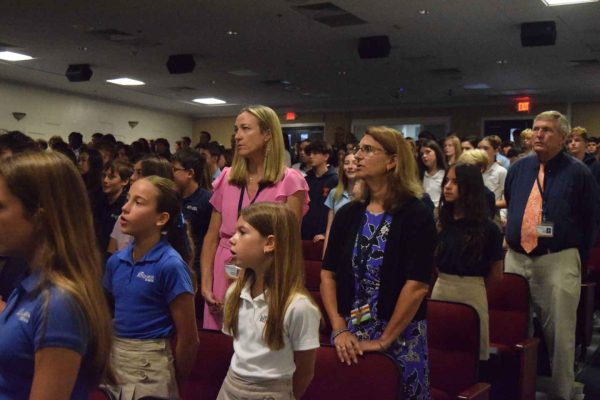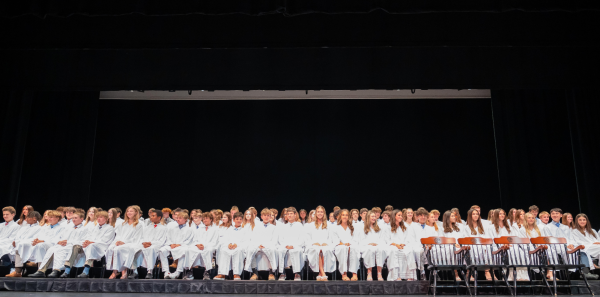Faculty Using Different Techniques to Teach Students Remotely
Mrs. Ramirez’s dance students go through their warm-ups remotely using Zoom.
Schools out, let’s scream and shout! Okay, maybe this was not the exact feeling of excitement that students and faculty were expressing when they left campus on March 13. Due to COVID-19 (aka the coronavirus), the Benjamin community was forced to start their online courses as of March 16.
To continue schooling, TBS, like many schools throughout the world, turned to online learning. The platform the administration chose was Zoom Video Communications, an American remote conferencing service company. Due to the current circumstances, many companies and schools across the country are using Zoom as an online communication tool. It provides a remote conferencing service that combines video conferencing, online meetings, chat, and mobile collaboration. Zoom has multiple online tools that make distance teaching that much easier, such as screen sharing, screen annotation, and the ability for users to virtually raise their hands and interact with up to one hundred individuals in real time.
Along with online textbooks, teachers are taking full advantage of different tools to help students better understand the concepts for their specific courses.
“I love the breakout rooms feature,” said Middle School Academic Dean Mr. Charles Maddox, referring to the teacher’s ability to section off students into small groups during the meeting, randomly or selected, in order for them to collaborate on the material they are working on. “It is nice for students to work in small groups even though we are learning online,” he said. “I have been using Quizizz in class for online assessments. It is a good way to assess students while [being] away from the classroom.”
As each faculty member continues to advance his or her knowledge of the online platform, many are discovering new and effective ways to teach the material from home.
“I have been playing around with several tools,” said middle school mathematics teacher Mrs. Lindsey Tanona, “and the ones that seem to have worked well are Pear-Deck, an add-on for Google Slides, and Desmos, an online learning platform for graphing. I have gotten positive feedback on both. I think my favorite tool is the breakout rooms. They take some pressure off of the ‘big screen’ view and allow for smaller group practice, just as if we were in the classroom.”
Students also seem to enjoy the variety of tools their teachers are providing.
“My teachers have used everything from breakout rooms, textbooks like VHL Central and Big Ideas Math, and a website called myshakespeare.com,” said eighth grader Andrew Lappin. “I’d say my favorite online tool is the breakout rooms because it is easier to get our work done in small groups rather than the whole grade. These tools are a necessity to online learning because if we didn’t have then, it would just be a teacher talking and that would not be as effective,” he said.
These online tools have allowed the students to transition smoothly to distance learning.
“The different tools make it easier to communicate with my teachers and classmates and [I] can ask questions,” said sixth grader Reese Ferry. “Google Assignments is my favorite because we can get the grade back quicker, and it is easier to send [my work] to the teacher.”
Both students and faculty are continuously adjusting to the online platform and finding new ways to make learning from home easier and more productive.





